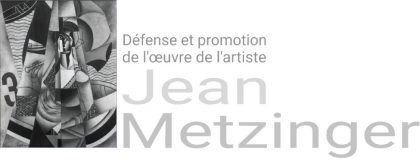Catalogue Raisonné Jean Metzinger

Número: AM-05-002 Jean Metzinger
Date: 1904-05
Titre: Bord de mer (The Seashore)
Technique: Huile sur toile
Dimensions: 64.5 x 91.2 cm
Inscriptions: Signed (lower left)
Collection: Newfields (Indianapolis Museum of Art)
Provenance: Hirschl and Adler Galleries, New York, by 1961.
Galerie René Drouet, Paris, France, by 1964.
Acquired by W. J. Holliday, Indianapolis, Indiana in 1964; bequeathed to the Indianapolis
Museum of Art in 1979 (accession no. 79.276).
Littérature: The Aura of Neo-Impressionism, The W. J. Holliday Collection, Indianapolis Museum of Art, Indiana University Press, 1983, reproduced p. 149
Joann Moser, Daniel Robbins, Jean Metzinger in Retrospect, The University of Iowa Museum of Art, 1985, cat. no. 5, reproduced p. 37
Notes: The Seashore, according to Joann Moser, may have been painted at a popular resort by the name of Houlgate, where alluring stretches of fine sandy beaches and a boardwalk extend to the base of a mountainous formation known as Les Falaises des Vaches Noires. Though this suggestion has not been independently confirmed. Indeed the Les Falaises des Vaches Noires presents a different topology, with spiked peaks, rather than the rounded crests visible in Metzinger’s seascape. More research would be required to determine the exact location.
An interesting feature to emerge in Bord de mer (The Seashore) is that of the three figures (lower right) enjoying the sights and sounds of Metzinger’s oil on canvas. This, as far as can be deduced for the available images of Metzinger’s 1902-1904 works, is one of the first times that the human figures appear in his paintings. Their apparent subservient role in this painting is contradicted by the cadmium red of their attire, and equalled only by the red highlights of the mid-ground cliffs. Even the sailboat, which counter-balances the threesome, compositionally is relegated to a tertiary role.
The Fauve palette, emerging Divisionist technique, and relative simplicity of Bord de mer combine to produce a unique taxonomy in early Neo-Impressionism at the outset of the 20th century. (Alexander Mittelmann, Jean Metzinger, Divisionism, Cubism, Neoclassicism and Post Cubism, written 2 May 2012)

